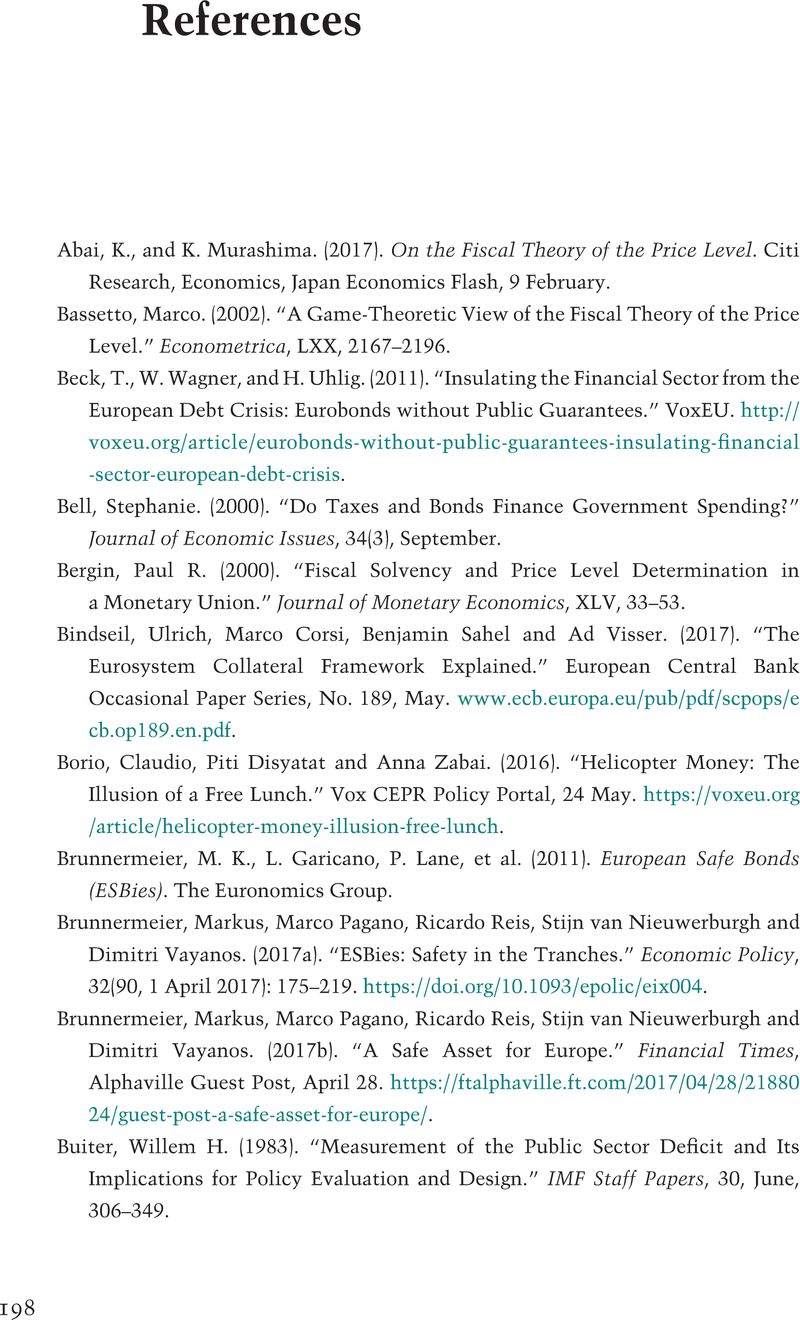Book contents
- Central Banks as Fiscal Players
- Federico Caffè Lectures
- Central Banks as Fiscal Players
- Copyright page
- Dedication
- Contents
- Figures
- Tables
- Introduction
- 1 The Central Bank Balance Sheet: Why It Matters
- Appendix to Chapter 1: Stochastic Discount Factors
- 2 A Stylized Set of Accounts for the Treasury, the Central Bank and the State
- 3 Helicopter Money Drops
- 4 The Fallacy of the Fiscal Theory of the Price Level – and Why It Matters
- Appendix to Chapter 4: A Formal Approach to the FTPL
- 5 Life at the Zero Lower Bound and How to Escape from It
- 6 Why the Eurosystem Isn’t a Proper Central Bank – and How to Make It One
- References
- Index
- References
References
Published online by Cambridge University Press: 02 November 2020
- Central Banks as Fiscal Players
- Federico Caffè Lectures
- Central Banks as Fiscal Players
- Copyright page
- Dedication
- Contents
- Figures
- Tables
- Introduction
- 1 The Central Bank Balance Sheet: Why It Matters
- Appendix to Chapter 1: Stochastic Discount Factors
- 2 A Stylized Set of Accounts for the Treasury, the Central Bank and the State
- 3 Helicopter Money Drops
- 4 The Fallacy of the Fiscal Theory of the Price Level – and Why It Matters
- Appendix to Chapter 4: A Formal Approach to the FTPL
- 5 Life at the Zero Lower Bound and How to Escape from It
- 6 Why the Eurosystem Isn’t a Proper Central Bank – and How to Make It One
- References
- Index
- References
Summary

- Type
- Chapter
- Information
- Central Banks as Fiscal PlayersThe Drivers of Fiscal and Monetary Policy Space, pp. 198 - 206Publisher: Cambridge University PressPrint publication year: 2020



